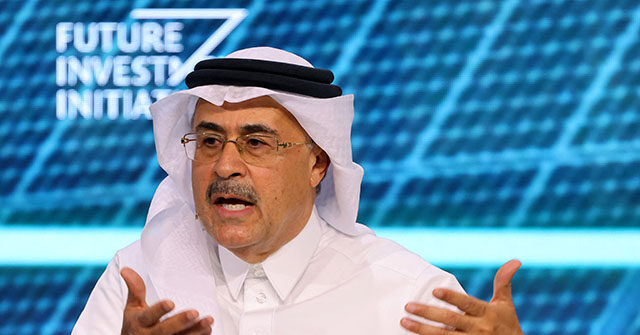Saudi Aramco, the national oil company of Saudi Arabia, posted a 22 percent decline in profits for the second quarter of 2025.
It was the tenth consecutive quarter of declining profit for one of the world’s largest companies, driven by slipping oil and petrochemical prices.
Aramco’s problem is that demand for oil remains strong, but supply has grown enormously, and unstable markets are making buyers reluctant to sign massive long-term contracts. The OPEC+ cartel, which includes Russia, has been reversing voluntary production cuts implemented during the economic calamity of the Wuhan coronavirus pandemic and the world is awash in oil as a result.
Aramco’s profits are still prodigious by any objective standard, adding up to $22.6 billion in June, but revenue is down 11 percent versus June of last year and Aramco is having trouble finding expenses to trim.
Aramco CEO Amin Nasser told journalists on Tuesday the company is convinced oil demand will soar throughout the rest of 2025. In fact, Aramco is discussing new capital expenditures to handle the surge of business it expects.
“Our long-term strategy is consistent with our belief that hydrocarbons will continue to play a vital role in global energy and chemicals markets,” Nasser said. He was far from the first analyst to pronounce last rites over the climate change crusade by projecting sky-high demand for fossil fuels through the middle of the century and beyond.
“We continue to invest in various initiatives, such as new energies and digital innovation with a focus on AI – aiming to leverage our scale, low cost and technological advancements for long-term success,” he added.
Although Saudi Arabia has embarked on a long-term plan to diversify its economy away from oil, the government still derives about 60 percent of its revenue from the industry and healthy Aramco profits are key to financing the economic diversification plan.
The plan appears to be showing some results, as the Saudi economy grew by 3.9 percent in the second quarter, even as Aramco profits slipped.
Some analysts fear the Saudi government will overreact to flagging Aramco profits by borrowing too much money and inflating the national debt, a possibility Nasser might have been trying to forestall by predicting higher demand and renewed profits just over the horizon.
Aramco’s chief financial officer, Ziad al-Murshed, assured reporters the company is “focused on cost-cutting” to weather a period of low prices. Aramco is also pursuing some income streams besides oil, including the huge Jafurah natural gas field, which the company touts as “the jewel of our unconventional gas program.”
Read the full article here


